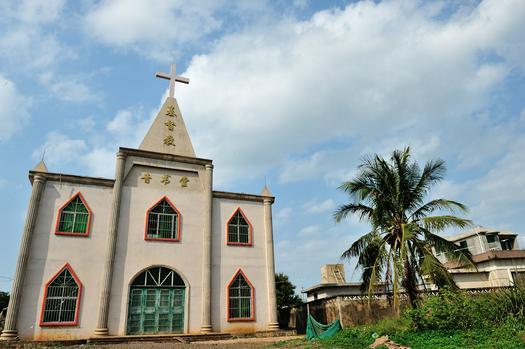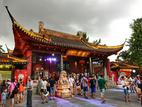A scholar reviews the history of Protestantism in Hainan Province in the 19 century in an academic symposium.
In the conference themed “Individuals, Organizations, and Cultures Spanning across China and the West” held on September 25 in Shanghai, Yang Yuanmeng from Shanghai University shared her research on the spread and development of Christianity in the 19th Century Hainan island.
The scholar whose research focused on mission, medication, and education, said that Carl C. Jeremiassen, an independent medical missionary, started the mission in Hainan.
In the conference held by the Shanghai Society of History and the history faculty of Shanghai University, she introduced that Carl C. Jeremiassen was a Danish sea captain who worked for the Canton Customs Service from 1869. In 1879, Jeremiassen did a medicine apprenticeship in Canton Hospital, where he met Dr. John Glasgow Kerr, a missionary from the Presbyterian Church in the USA (PCUSA). In 1881, he settled down in Haikou, Hainan and served as an independent medical missionary.
“Distributing Bibles in one hand and dispensing medicines in the other”, Jeremiassen found it hard to juggle with both medication and evangelism work. Therefore, he established further contact with the PCUSA in Canton, who sent Pastor Benjamin Couch Henry in 1882. Three years later, PCUSA Canton Mission sent Rev. Henry V. Noyes to Nada (Nodoa) Town, Hainan, who baptized nine believers. Jeremiassen joined PCUSA Canton Mission as well.
In 1886, Dr. H. M. McCandliss, Frank P. Gilman and his wife Marion Gilman, Pastor Benjamin Couch Henry and another two local missionaries joined the mission in Hainan.
In 1893, PCUSA Hainan Mission was established in Qiongzhou. With three main stations in Qiongzhou, Nada and Jiaji, Hainan Mission was the only mission organization ever to exist in Hainan, even still to this day. By the year of 1900, a total of 26 missionaries had been sent to Hainan.
Hainan Mission used church planting, gospel brochures, street evangelism and traveling evangelism as the primary evangelism methods, while they also set up schools and hospitals to assist evangelism indirectly, Yang added.
Language was the biggest barrier for early mission work. Upon their arrival in Hainan, foreign missionaries first learned Hainanese and languages of various peoples and tribes, as well as hiring local people to assist them. Jeremiassen translated a big portion of the Old and New Testaments into Hainanese using Romanized scripts.
As the first female missionary in Hainan, Mrs. Marion Gilman evangelized to local women passionately. Her loving service had been continuously remembered by women in Nada, whether Christian or not. No one else ever found a way into their hearts as Mrs. Gilman did.
Yang explained that missionaries built modern hospitals, delivered medicines and treatments and spread modern medical knowledge in Hainan, which effectively removed the hostility and prejudice towards missionaries.
During a cholera outbreak, missionaries prepared ventilated rooms for hospitalized women and frequently disinfected the rooms with carbolic acid to prevent its re-emergence.
Missionaries set up schools to provide both general and religious education. Although religious education was the original purpose, for local people, what attracted them to church was initially learning English.
She concluded, “Missionaries brought western culture and modern medicine to Hainan and thus promoted Hainan’s development. Christianity and Hainan culture experienced both conflicts and integration between each other, which facilitated the two-way communication between the cultures.”
- Translated by Grace Song











